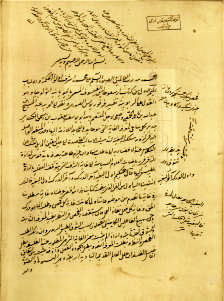Home » G2A Web App

G2A Web App · Presentation
Usage requires particular attention as concerns the interface between the information system and the user, while appropriateness and flexibility have not been sufficiently taken into consideration even due to the fact that they almost seem to be in contradiction. Therefore, it is not easy to plan and implement a text processing system which is suitable for specific types of research and at the same time flexible to operate in various sectors of study.
The project G2A Web App is aimed at achieving this ambitious target through an architecture based on interconnected modules. In other words, the system works with a nucleus of components for the treatment of both text files and digital image files, which form the core of the system. According to the specific needs, from time to time a number of programs are added both for the management of images (enhancement, segmentation, pattern recognition, etc.) and of text (natural language processing, information extraction, data mining, electronic editing, ecc.). The simplified scheme which lies behind G2A Web Application could be represented as follows:
- The first element is represented by the respect of internationally shared standards, so that the information managed by G2A Web Application is interoperable with other data produced in the humanistic field. The standards are also followed when not only primary data (texts, images, etc.), but also secondary information, such as annotations, variants, comments and/or information produced by computational systems (e.g. morphological, syntactic, semantic analyses) are introduced. The software development tools are totally open source in order to avoid any fees for end-user licences.
- The information system is entirely web-based and the tools for the production or search for information are oriented towards the sector of critical and textual scientific editing. At present, the target of G&A Web Application is represented by specialist users. However, the structure of the system also envisions a number of operations, in particular those connected to the phases of search and query, which can be further developed so as to meet the needs of a non-specialist-user.
- G2A Web App allows to produce on a web server data that have been labelled and annotated in collaborative form, as long as all the members of the same community (e.g. mediaeval philologists, Greek papyrologists, Egyptologists, Latin epigraphists, historians and science philosophers, etc.) agree with the same standards, as evidenced in point 1.
- Some experiments are in course to check whether G2A Web Application meets the needs requested by a specific community of scholars working on ancient sources written in non latin alphabets (e.g., Greek, Arabic). The documents and annotations are produced in digital format and are classified according to a domain ontology agreed upon by the same members of the community. This semantic-conceptual structure can be replicated not only to classify the documents, but also part of their content. In this way, it is possible to retrieve information both at the level of forms (words, strings of characters, lemmas), and at the level of concepts expressed in the single parts of the texts.
The computational philological system G2A Web App, already active for web creation and query of digital archives of high cultural value and specialized modules for the management of annotations and critical apparatuses, will form the basis for computational handling of Greek and Arabic texts of interest for the project. System customization to the specific requirements of "Greek into Arabic" is feasible, organized as it is in a modular structure. Alongside the basic software components, the system will include the following specialized modules:
-Module for the management of parallel texts. Checking of the modes of translation into Arabic of the Greek texts will be made possible by subdividing the texts into corresponding pericopes, for which G2A Web App will produce two separate indexes: a) index of the Greek forms, where each form is followed by the Greek contexts and corresponding contexts of the Arabic translation; b) viceversa, index of the Arabic forms, each followed by the Arabic contexts and corresponding ones of the original Greek text.
-Lexicographic module. The module will be designed so as to facilitate the process of lemmatization of the Greek and Arabic inflected forms.
The system will associate each entry to the forms present in the Greek and Arabic texts, showing all the contexts in which each occurrence appear.
-Module of semantic description. This module regards the final process aimed at the creation of a philosophical dictionary that will be implemented according to the traditional methods of "Computational Lexicons". Therefore, the entries will be described according to a specific formalism, at the advantage of a wide variety of possible queries. On the basis of a study of lemmatized contrastive concordances, the experts of the domain, namely the principal investigator and her collaborators, will establish a scheme of meanings and relations to be applied to a sample of terms of particular valence as well as scientific and cultural interest. Furthermore, G2A Web App will use this scheme to produce what could be defined as an "ontological" or, more commonly, "onomasiological" index.
-Finally, the information system will study the modes, and perform experimental testing to create a linkage between the "Greek into Arabic" entries and the ones available on-line into the "Glossarium Greco-Arabicum" database produced in the Centre of Bochum University.
Web site



